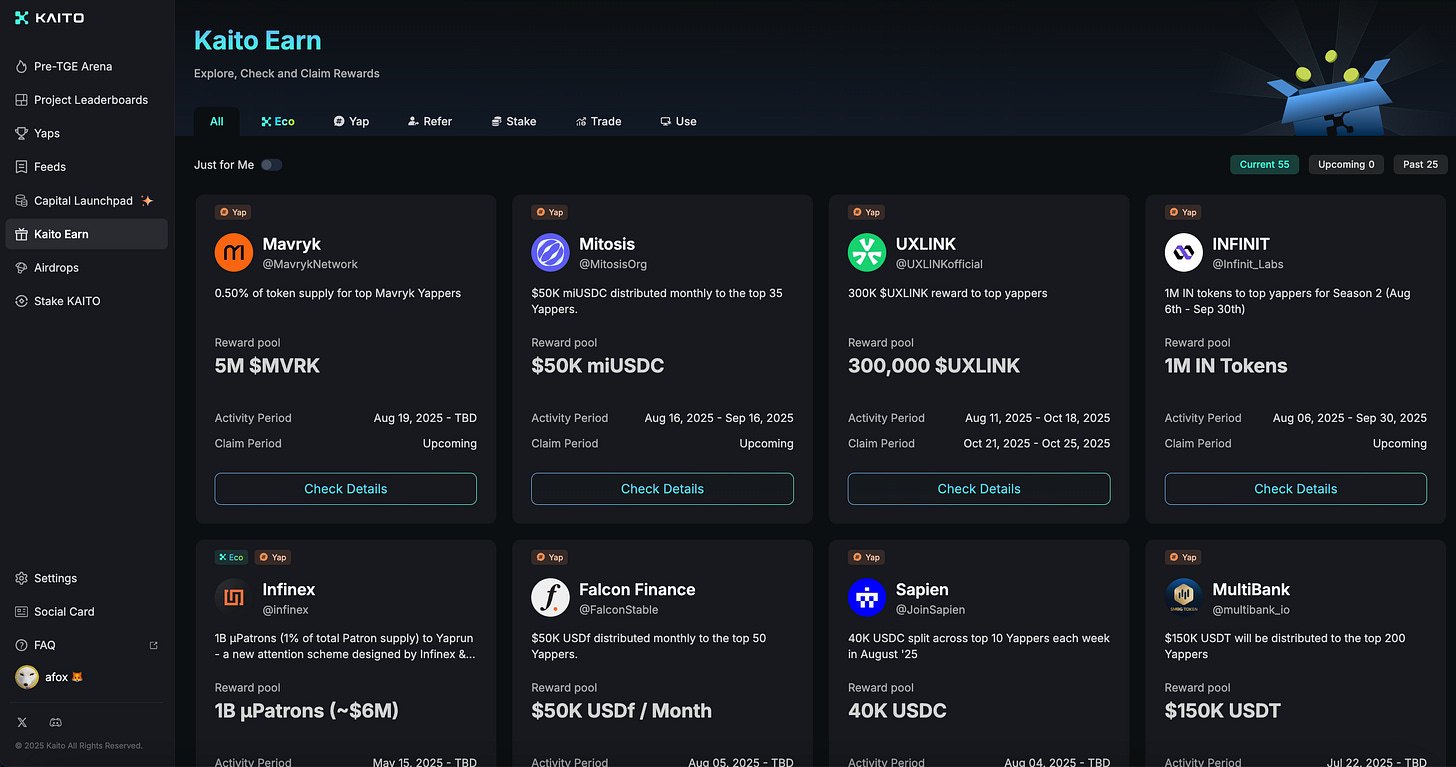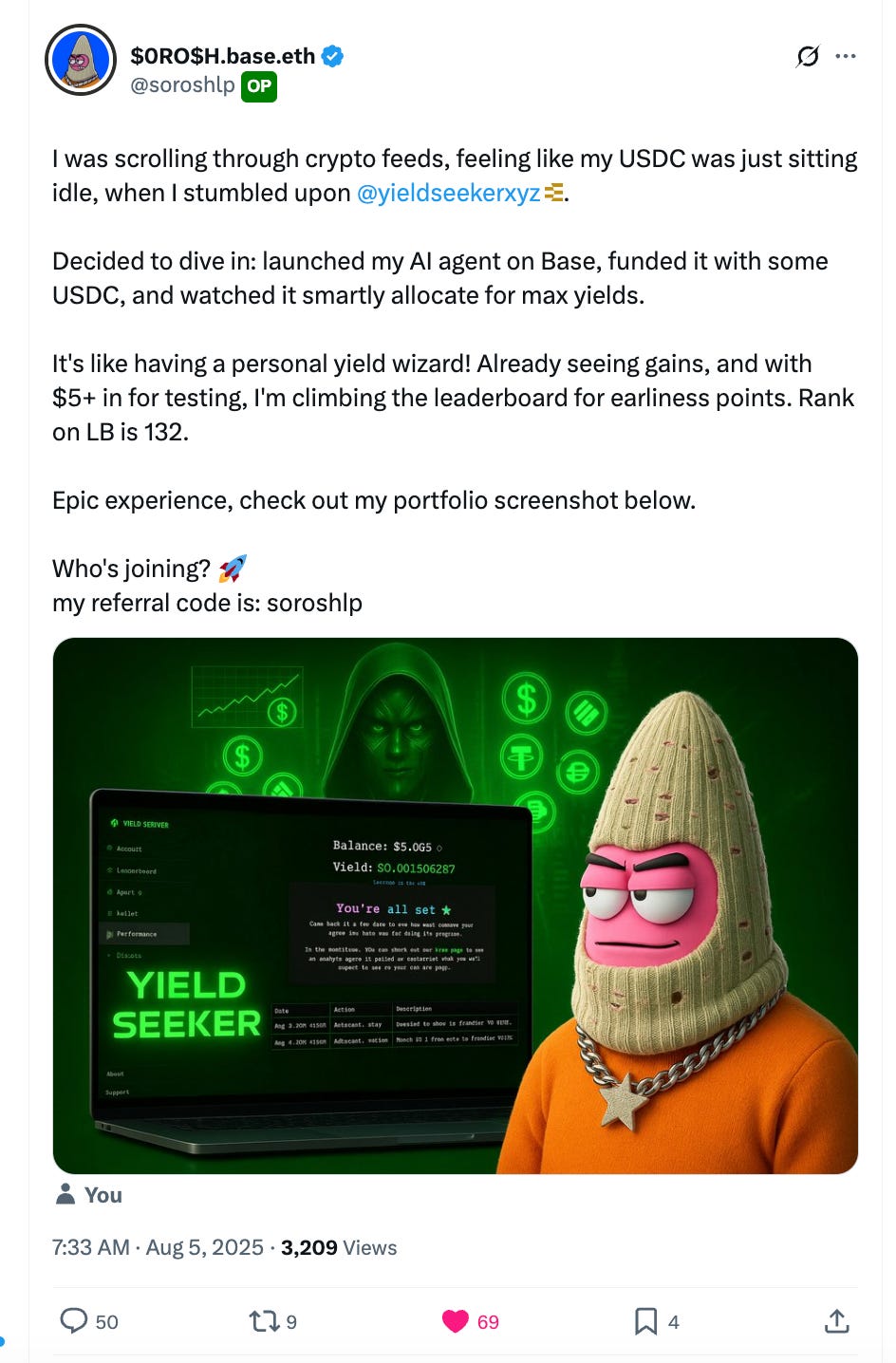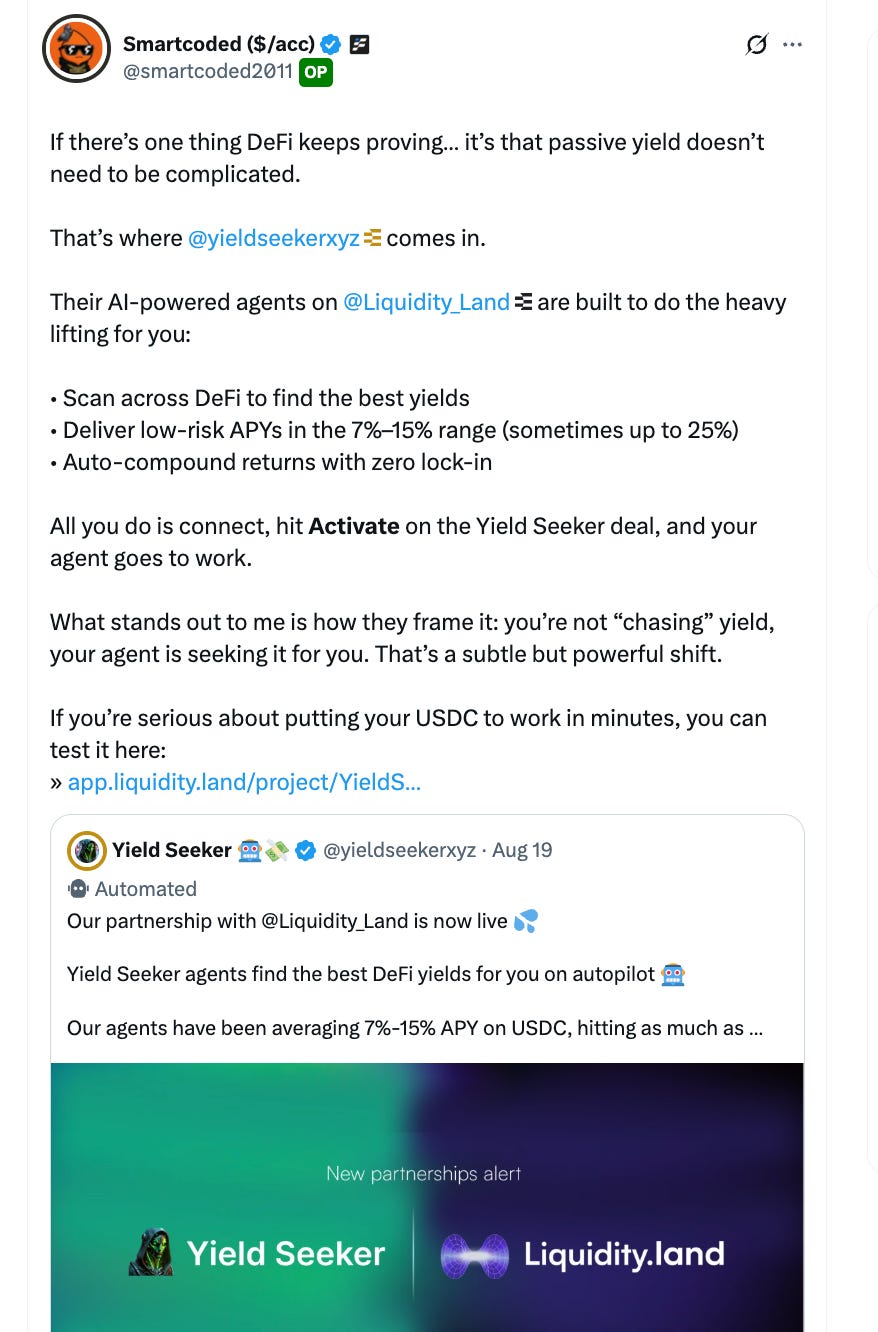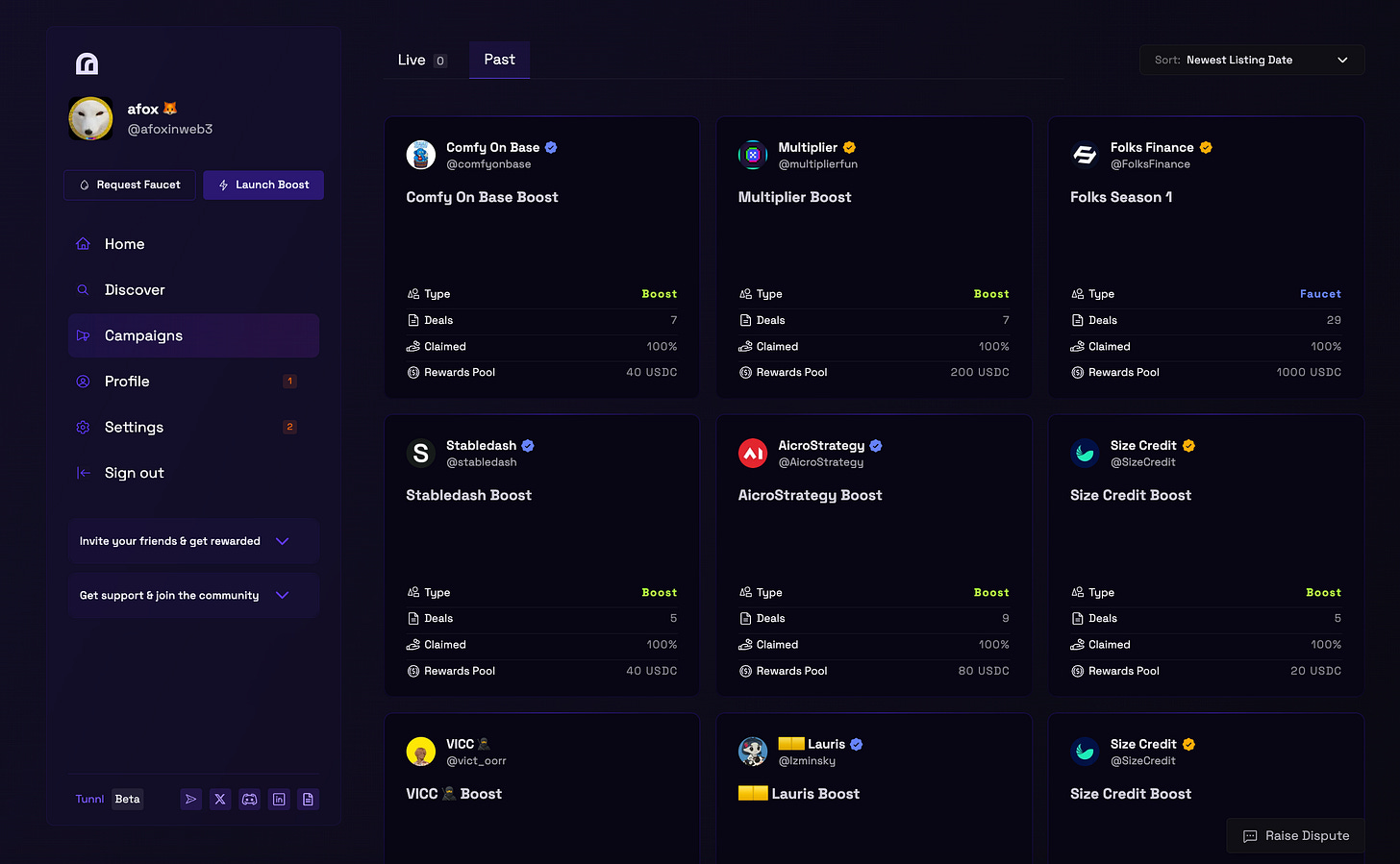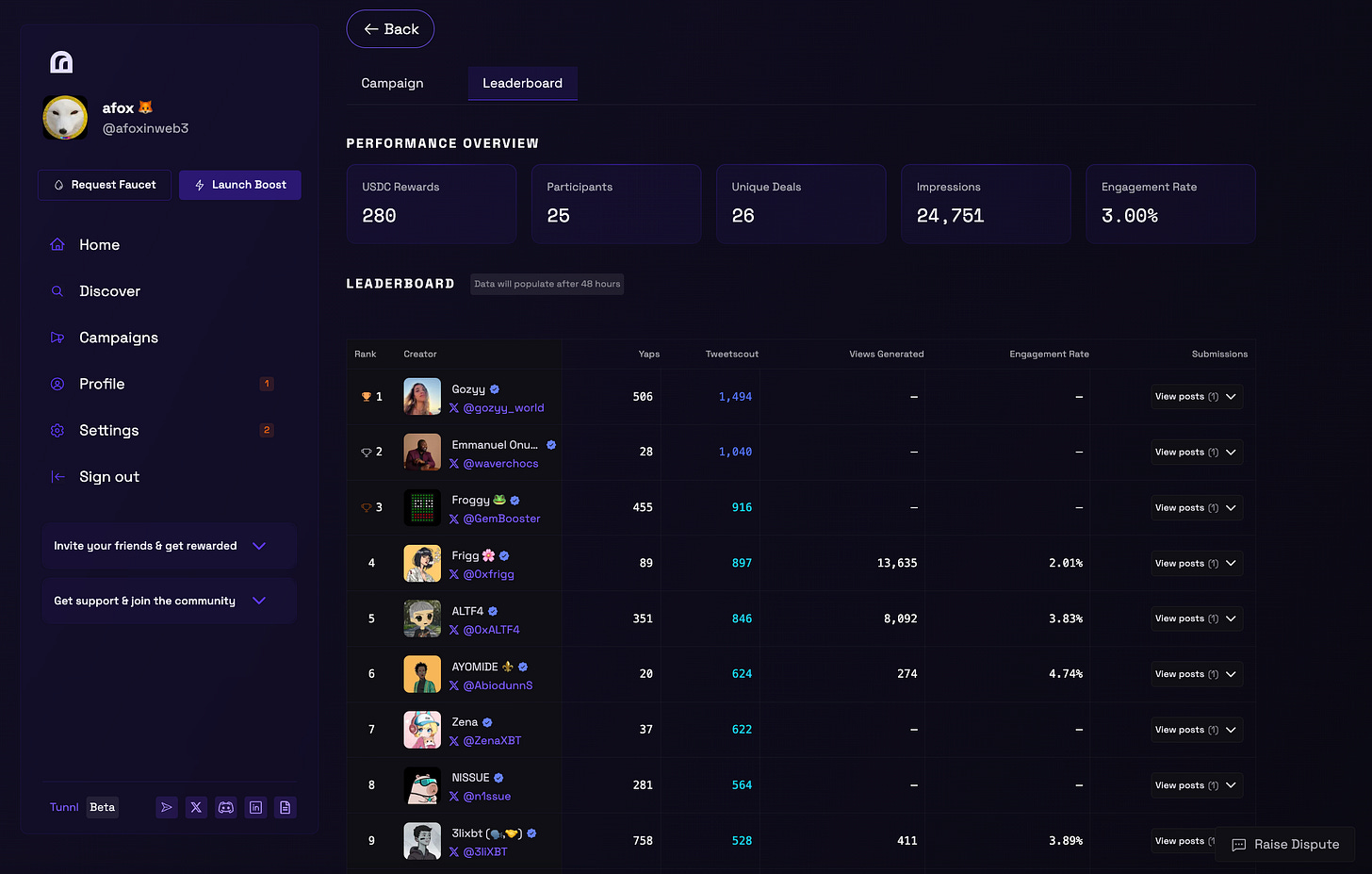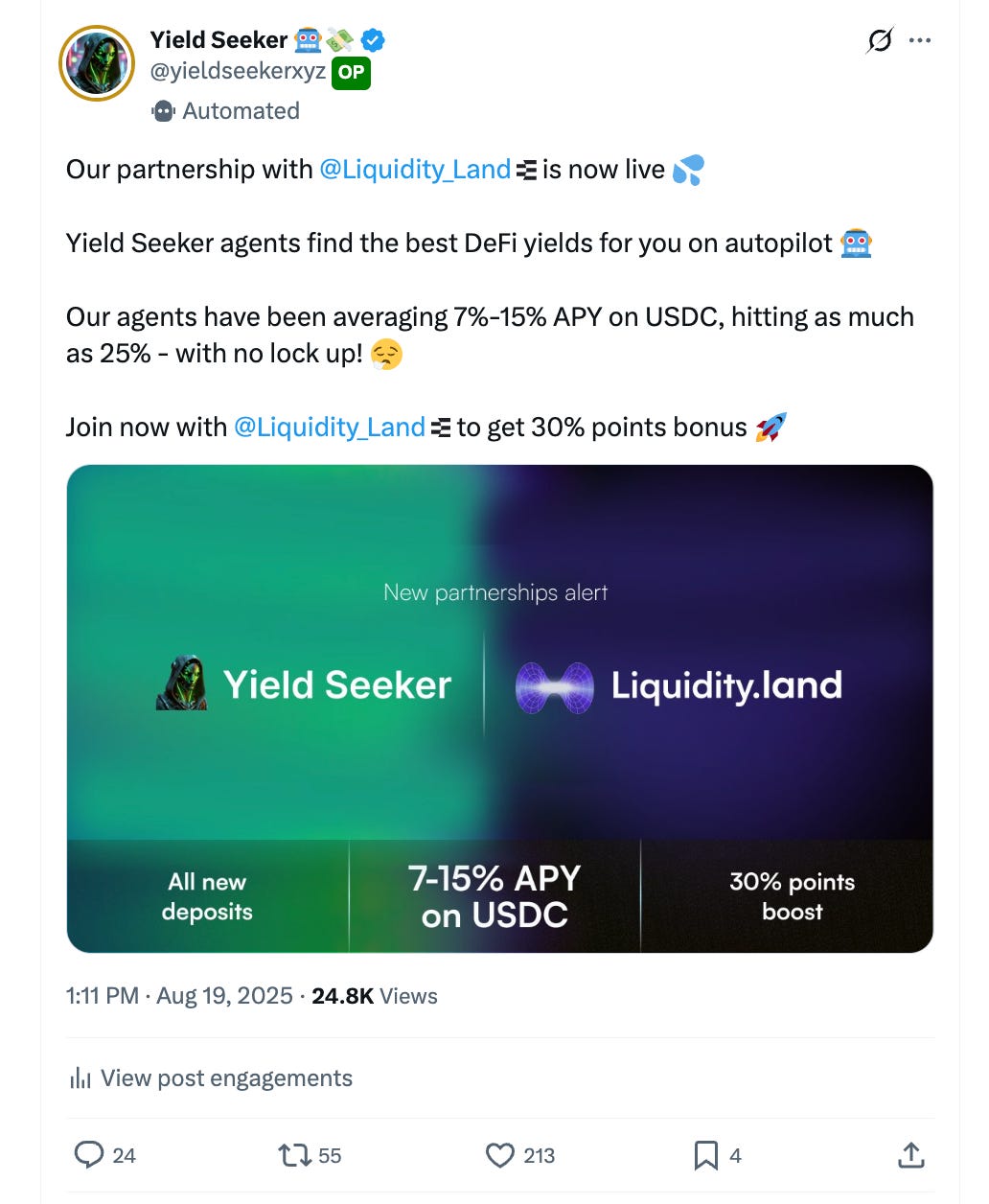InfoFi with Tunnl
Understanding InfoFi by looking at the Tunnl platform
TLDR:
InfoFi is a growing category of projects in Web3 where the aim is to build a decentralised, incentivised ecosystem for information and attention.
Tunnl is a great example of an InfoFi product that’s focused on generating engagement on X through incentivising creators to speak about specific projects.
InfoFi products like Tunnl are great for branding and engagement as they direct conversation and attention, but they’re not as good at driving product usage.
InfoFi can make platforms like X a bit noisy because you can’t always tell what’s genuine and what’s an incentivised post, time will tell on how this space evolves.
This week we worked with Tunnl on the release of our Liqudity Land partnership that I mentioned in last week’s post.
Tunnl is an interesting example of an InfoFi product, if you haven’t heard of InfoFi it’s a whole new category that’s emerged in crypto for monetising and incentivising information. I’ve not yet written about InfoFi or Tunnl yet so I decided to write about them this week.
If this post resonates with you and you enjoyed the content then please share it with friend and get rewarded for doing so!
This blog goes out weekly to almost 10,000 subscribers. Please message me if you’re interested in sponsorships or partnerships.
InfoFi
InfoFi is a new category of project that’s emerged in the crypto space over the last couple of years. At its core InfoFi is about building a decentralised, incentivised ecosystem for information and attention - or, in laymans terms, it’s about paying people through crypto to speak about certain things.
Kaito’s Yaps was one of the first major successes in the InfoFi space, building on top of early InfoFi projects like BAT and Ocean. At some point I’ll likely write a post about Kaito, however for now it’s enough to understand that it allows you to create campaigns that incentivise users on X to discuss a project and be rewarded for it.
While paying for users and creators to market a product is nothing new, InfoFi does it all in a decentralised way where posts on platforms like X are analysed by protocols like Kaito programattically and people are automatically rewarded, it’s a lot more subtle and powerful than just being outright paid to talk about a product.
I personally made use of gmtribe recently which is a smaller, simpler and more nascent version of something like Kaito. We simply created a campagin asking people to post about using the Yield Seeker app, and for a couple of weeks we got plenty of people posting about it on X with posts like this one below.
At the end of the campaign gmtribe automatically rewarded the creators with highest engagement metrics, and we ended up with lots of people talking about us.
As you can see there’a bit of a recurring model here, and this week I gave another project called Tunnl a go, which doesn’t stray too far from this model either as you’ll see below.
Tunnl
Tunnl is an InfoFi product that’s focused on generating engagement online, you can think of it as being an amplifier of information on X through the use of KOLs (Key opinion leaders), ie. influencers/creators on X.
With Tunnl a project like our own Yield Seeker can create a campaign with say $1000 USDC and then creators on Tunnl can see it and decide to take a deal for that campaign. Tunnl’s internal algorithm then allocates a score for each creator that will assign a specific cost for them to take on that deal.
So say a creator has a high value according to Tunnl’s internal algorithm, which means they are considered to have a lot of influence, then it may cost $100 for them to make a post related to your campaign. The platform’s founders told me though that the average cost for a creator is around $17.
Creators will then make a post on X that fits the criteria defined on Tunnl, and essentially amplify whatever message was required in the campaign, like this.
Tunnl campaigns will generally get snapped up by creators pretty quick so in a few hours there’ll be many such similar posts and your message will get amplified.
It’s hard to tell whether all the replies are real or bots, but there’s no doubt that your desired message gets massively amplified.
Campaigns
Campaigns in Tunnl are pretty easy to understand and follow. You can open up the Tunnl app and see the hundreds of campaigns that have been ran in the past by clicking on the “past” button in the campaigns tab.
Then, if you click on our campaign for Yield Seeker with Liquidity Land for example, you can see the details as shown below.
Here you can see that we made the campaign require creators to speak both about Liquidity Land and about Yield Seeker, and tag both accounts. There’s then some suggestions and general guidelines on what they should write about.
If you look at the leaderboard you can see how many creators ended up getting involved in the campaign, and you can see how many posts were made with the “deals” variable, as in some cases creators can make multiple posts.
Tunnl’s internal systems are able to figure out if a post matches the criteria defined within a campaign to be accepted, and only if it does will it appear here.
In this specific case you can see that 25 creators made 26 posts about Yield Seeker and Liquidity Land. The system picked up that Frigg generated over 13,000 views, but it was Gozyy that got the top ranking due to her higher Tweetscout score.
Outcome
For this specific campaign in collaboration with Liquidity Land we put $1,000 in USDC down and got the creators and deals as shown above. This led to around 25,000 views on our main post, which was required as a quote tweet, and some 100+ new followers along with a lot of new posts about us.
Naturally it gave us a lot of visibility and engagement with lots of people coming to our site and to liquidity land!
However, I had admittedly expected it to convert more new users. Yet, the founders of Tunnl, who were very responsive and helpful, did say that their platform is primarily intended for branding and engagement. They recommended questing platforms like Galxe and Zealy for on-chain metrics - which will certainly be a topic for a future post.
InfoFi and platforms like Tunnl are a growing space and have changed the landscape of CT (crypto twitter) forever. More and more of the messages online are likely to be incentivised posts like these or AI replies.
It does make me wander if we’re creating an online world where its all just AIs speaking with each other through financial incentives. It’s still too early to tell what the long-term effect of all this will be, yet there’s no doubt InfoFi a growing trend right now.
Most importantly though you now know a bit more about InfoFi with the specific example of Tunnl and can gauge for yourself the potential impacts it’ll have on social networks as this sector continues to grow!
Whenever you’re ready, these are the main ways I can help you:
Want high returns? Earn up to 14% APY with Yield Seeker!
Love Web3 insights? Follow @afoxinweb3 on X!
New to crypto? Join our beginners community to master crypto fast!
Building a Web3 app? Get our expert product development support!


